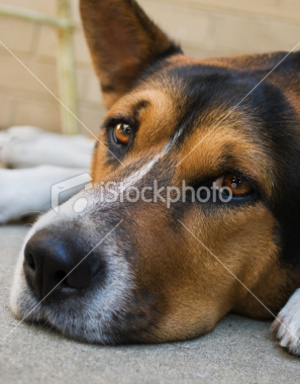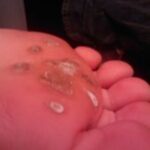Warts on your dog are really quite common. They are caused by the Papilloma virus, and though they can be quite unsightly; usually there is no cause for concern because in most cases your dog is not even aware that they are even there.
The Papilloma virus entered your pet’s body through a skin lesion such as a cut or scrape because it came into direct contact with another infected animal; the process by which most viruses are contacted.
If you have never seen exactly what canine warts look like, and are unsure what to do, it is always a good idea to have your pet checked out by your veterinarian; just to be on the safe side. Chances are, if the warts are causing no discomfort to your pet, the vet will tell you to leave them alone, as they will be gone in a few short months. Your vet can prescribe a medication if he/she feels it is absolutely necessary.
There are many things that you can do for your pet to help it through its infection of canine warts.
1. Keep your dog clean and dry
Keeping your dog’s skin clean and dry will help in keeping the virus from spreading to other areas of your pet’s body. And since warts seem to thrive on moisture, it is a good idea to keep your dog as dry as possible.
2. Don’t expose your pet to other dogs
Just as your dog picked up the canine warts from another dog, your dog can now spread them as well; especially if that dog has skin lesions. This also means that you should not take your dog to a dog park for awhile, especially if he/she will come into contact with other dogs.
3. Try to keep your pet from scratching
If you allow your dog to scratch his warts; not only can it open up his skin to infection, but it could also cause the warts to enlarge and thicken. If the warts are on his face or around his mouth, as most of them are; you might consider purchasing a special collar to put around its neck so that your dog cannot scratch around the face.
4. Try some vitamins on the skin
I have found that applying a little vitamin E oil directly on the wart keeps the wart a little softer, and doesn’t seem to get itchy.
One of my dogs got warts on one of the pads of his feet. It seemed that because it didn’t belong there, he was licking at it constantly. A friend of mine suggested making a paste of crushed up vitamin C tablets and a little water. I wasn’t comfortable doing this as he was licking his paw a lot, and I was afraid of the vitamin C causing blisters on his tongue. What I did do was take lemon slices, and rub them on his paw that had the warts. He hated the taste of the sour lemon juice so much, he stopped licking his paw. It didn’t take very long of doing this before he learned to stop licking his paw.
5. Be patient
It usually takes between 2 to 6 months for canine, or dog warts to disappear. With a little patience, they will be gone before you realize it, and everything can get back to normal.




